Tiger’s Nest Monastery (Taktsang Palphug)
The Tiger's Nest Monastery, officially known as Taktsang Palphug Monastery, is one of the most sacred and visually stunning places in Bhutan. Perched precariously on the edge of a 3,120-meter-high cliff in Paro Valley, it is a symbol of Bhutan's religious heritage and a testament to human endeavor.
.jpg)
-
Historical Significance: The monastery's name, "Taktsang," translates to "Tiger’s Lair," and traces its origins back to the 8th century. According to legend, Guru Padmasambhava (also known as Guru Rinpoche), who is credited with introducing Buddhism to Bhutan, flew to this location from Tibet on the back of a tigress. He meditated in a cave here for three years, three months, three weeks, three days, and three hours. The site has been held sacred ever since and is believed to be one of thirteen small monasteries or "tiger's lairs" where he meditated.
-
Architectural Marvel: The monastery complex is built directly into the cliff face, nearly 900 meters above the valley floor, and consists of four main temples and several other rooms. The buildings are interconnected through rock stairways and balconies, all built with precision that defies their precarious perch. Despite the remote location and altitude, the monastery features stunningly detailed interior woodwork, vibrant wall paintings, and golden roofs that gleam against the backdrop of the surrounding mountains.
-
Visitor Experience: Reaching the monastery is no small feat—it requires a trek of about two to three hours from the valley floor. The path, often steep and challenging, is well-trodden and equipped with viewing points, cafes, and resting spots. For many, the journey is a pilgrimage, reflecting personal and spiritual introspection. Upon arriving, visitors are rewarded with breathtaking views of the surrounding mountains and valleys and an up-close experience of one of the most unique religious sites in the world.
-
Spiritual and Cultural Impact: Taktsang Palphug remains an important pilgrimage site for both Bhutanese and international visitors. Its image is emblematic of the deep spiritual and cultural layers that define Bhutan. Annually, numerous festivals and religious events are held here, drawing monks, locals, and tourists alike, who come to seek blessings and witness the harmony of Bhutanese religious practices.
The monastery not only showcases the extraordinary architectural skills and spiritual solemnity of Bhutan but also offers a deeply reflective and unforgettable experience amidst the serenity and beauty of the Himalayas. Its status as a must-visit site is well deserved, attracting those who wish to experience its mystical allure and spiritual resonance.
Punakha Dzong
Punakha Dzong, also known as Pungthang Dewachen Phodrang or "the palace of great happiness," is one of Bhutan's most beautiful and significant dzongs. Situated at the confluence of the Pho Chhu (male) and Mo Chhu (female) rivers in the Punakha Valley, it is a stunning example of Bhutanese architecture, deeply imbued with cultural and historical significance.
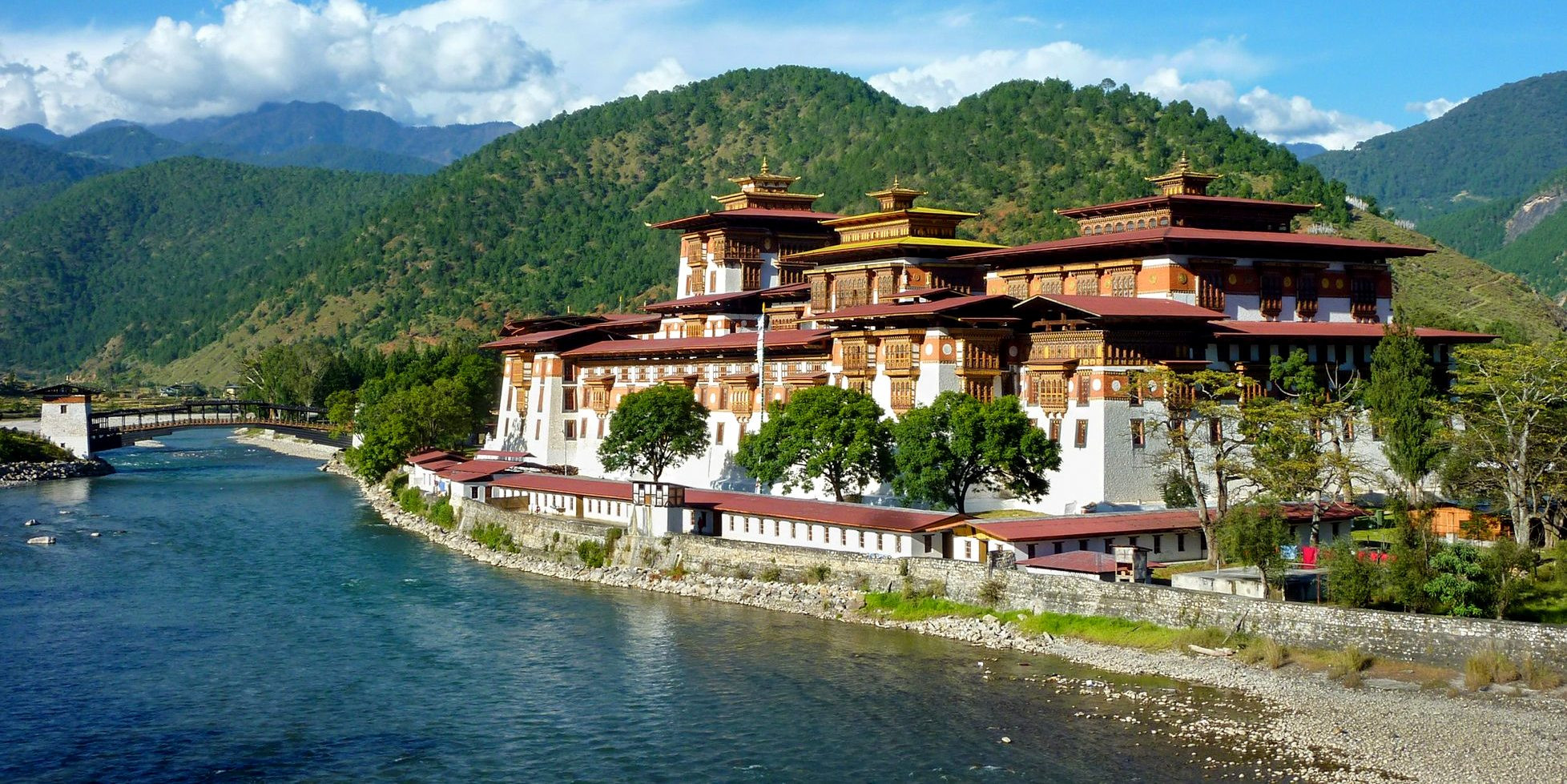
-
Historical Importance: Constructed in 1637-38 by Zhabdrung Ngawang Namgyal, the founder of the Bhutanese state, Punakha Dzong served as the administrative center and the seat of the Government of Bhutan until the capital was moved to Thimphu in 1955. This majestic dzong played a pivotal role in the unification of Bhutan as a nation-state and has been the epicenter of some of the most important events in Bhutanese history.
-
Architectural Splendor: The dzong's architecture is a masterpiece, representing the zenith of Bhutanese craftsmanship. It features elaborately carved woodwork and beautiful paintings that depict important Buddhist teachings and events. The structure is massive, yet elegantly proportioned, with thick whitewashed walls that tower over its traditional wooden roof. Inside, the dzong houses many sacred relics and the embalmed remains of Zhabdrung Ngawang Namgyal and Terton Pema Lingpa, revered figures in Bhutanese Buddhism.
-
Cultural Hub: Punakha Dzong is not only a historical monument but also an active religious site. It remains the winter residence of the Je Khenpo (Chief Abbot) and the central monastic body. The dzong's courtyards are venues for the Punakha Tshechu and Drubchen, vibrant festivals that attract thousands of locals and tourists every year. These festivals feature mask dances, traditional music, and enactments of Buddhist legends, providing a glimpse into the spiritual and cultural life of Bhutan.
-
Visitor Experience: Visitors to Punakha Dzong are often struck by its majestic setting at the rivers' junction, framed by the lush, green hills of the valley. The strategic location offers natural defense advantages and stunning views that change with the seasons. During spring, the dzong is surrounded by blooming jacaranda trees, creating a picturesque scene of vibrant purple against the dzong's stark white walls.
-
Spiritual Significance: The dzong continues to be a place of deep spiritual importance. It houses several important temples and relics, including a sacred machhen (relic) of Avalokitesvara (Chenresig), the Bodhisattva of compassion. Pilgrims and visitors alike come to Punakha Dzong to seek blessings and experience the tranquility and spiritual energy that pervades this holy site.
Punakha Dzong embodies the spiritual heritage and architectural ingenuity of Bhutan. It stands not only as a monument of the past but as a living institution where tradition and spirituality continue to thrive. This makes it a must-visit for anyone looking to delve deep into the heart of Bhutanese culture and history.
Paro Dzong (Rinpung Dzong)
Paro Dzong, officially known as Rinpung Dzong, which means "Fortress on a Heap of Jewels," is another jewel in Bhutan’s architectural crown. Located in the picturesque Paro Valley, it is one of Bhutan's most impressive and well-known dzongs, embodying the depth and grandeur of Bhutanese heritage.
.jpg)
-
Historical Background: Constructed in 1644 by Zhabdrung Ngawang Namgyal, the founder of Bhutan, Paro Dzong serves as both a religious and administrative center. It was built on the foundation of a monastery established by Guru Padmasambhava in the 15th century, which adds to its spiritual significance. Over the centuries, it has played a crucial role in defending the Paro Valley from numerous invasions.
-
Architectural Features: The architecture of Paro Dzong is a striking example of Bhutanese culture, blending functionality with aesthetic beauty. The structure is characterized by towering exterior walls and a complex series of courtyards, temples, offices, and living quarters inside. The approach to the dzong is a traditional covered bridge called Nemi Zam, which spans across the Paro Chhu River, adding a picturesque entry point to the fortress.
-
Cultural and Religious Hub: Paro Dzong is not only a central administrative office for the Paro district but also a monastic center with about 200 monks residing within its walls year-round under the guidance of the Penlop of Paro Dzong. The dzong also plays a vital role during the annual Paro Tshechu, a religious festival that attracts tourists and locals alike. This festival is famous for its mask dances and for the unfurling of a giant thangka, a sacred scroll painting that is considered one of the treasures of Bhutanese art.
-
Visitor Experience: Visitors to Paro Dzong are greeted by the intricate woodwork and beautiful wall paintings that adorn the interior, depicting various Buddhist lore and legends. The architecture, while robust and imposing, is finely detailed with vibrant colors that reflect the traditional Bhutanese style. The dzong's location offers panoramic views of the surrounding valley and mountains, making it a photographer’s paradise, especially during sunset.
-
Spiritual Significance: The dzong houses several important temples, including the Kungarwa, the Monks’ Assembly Hall, and the Sandalwood Stupa, each rich with historical and spiritual importance. The Sandalwood Stupa, in particular, is said to contain a relic of Zhabdrung Ngawang Namgyal, making it a significant pilgrimage site for Bhutanese Buddhists.
Paro Dzong stands as a sentinel over one of Bhutan's most important valleys and serves as a gateway to the country's past. Its combination of religious significance, historical depth, and architectural beauty makes it an essential stop for anyone visiting Bhutan.
Gangtey Monastery in Phobjikha Valley
Gangtey Monastery, also known as Gangteng Gonpa, is located in the picturesque Phobjikha Valley, which is often referred to as the Valley of the Black-Necked Cranes. This monastery is not only for its religious importance but also for its stunning natural surroundings and the cultural heritage of the region.
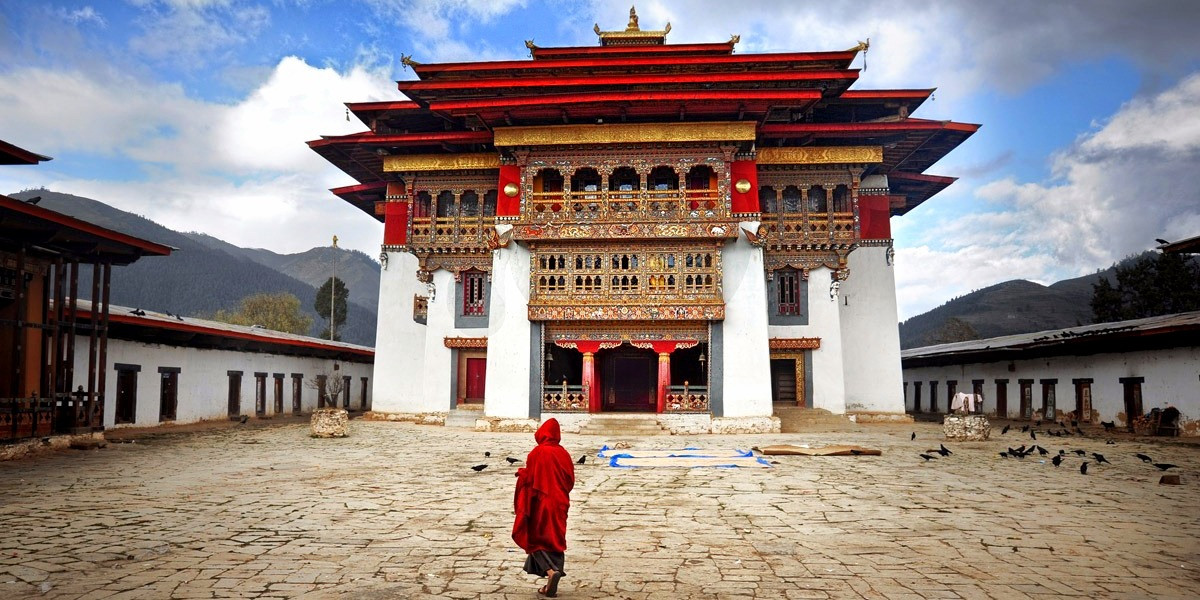
-
Historical Context: The Gangtey Monastery was founded in 1613 by Gyalse Pema Thinley, a grandson and reincarnation of the influential treasure discoverer, Pema Lingpa. It belongs to the Nyingmapa school of Buddhism, the oldest of the four major schools of Tibetan Buddhism. The monastery is particularly significant because it is the main seat of the Pema Lingpa tradition and one of the two main centers of the Nyingmapa school in Bhutan.
-
Architectural Splendor: The monastery complex, rebuilt in the 2000s, showcases a stunning example of traditional Bhutanese architectural styles. It features a large central goemba, surrounded by several smaller buildings, all adorned with intricate wood carvings, vibrant paintings, and finely crafted statues. The structure is particularly notable for its commanding view over the Phobjikha Valley, making it a serene retreat for both monks and visitors.
-
Cultural Significance: Gangtey Monastery is the heart of cultural life in the valley. It plays a pivotal role during the annual Black-Necked Crane Festival, held each November to celebrate the arrival of the cranes for the winter. The festival includes cultural dances, songs, and plays performed by the local community, and it aims to raise awareness about the conservation of this endangered species.
-
Natural Setting: The Phobjikha Valley, where the monastery is located, is a designated conservation area and one of Bhutan's most important wildlife preserves. The valley serves as the winter home to the rare and beautiful black-necked cranes that migrate from the Tibetan Plateau. The cranes are deeply revered by the Bhutanese people, and their arrival is seen as an auspicious sign and a cause for celebration.
-
Visitor Experience: Visitors to Gangtey Monastery can explore the expansive interior of the monastery, which includes several shrines and a large statue of Pema Lingpa. The natural tranquility of the area, combined with the spiritual atmosphere of the monastery, provides a peaceful and reflective experience. Hiking and walking in the valley offer opportunities to appreciate the scenic beauty and spot wildlife, including the black-necked cranes.
-
Spiritual Atmosphere: The monastery is an active spiritual center where visitors can observe Buddhist monks engaging in daily prayers and rituals. The teachings of Pema Lingpa continue to influence the practices observed here, and the monastery is considered a place of spiritual education and practice, attracting monks and spiritual seekers from across the region.
Gangtey Monastery in Phobjikha Valley is more than just a religious site; it is a nexus of spiritual, cultural, and natural beauty. For those visiting Bhutan, it offers a unique glimpse into the serene monastic life, set against one of the most beautiful and untouched landscapes in the country.
Kurje Lhakhang
Kurje Lhakhang, located in the Bumthang district of Bhutan, is one of the country’s most sacred and historically significant monasteries. This complex of temples holds a special place in the spiritual and cultural landscape of Bhutan, known for its profound historical roots tied to the introduction of Buddhism into Bhutan.
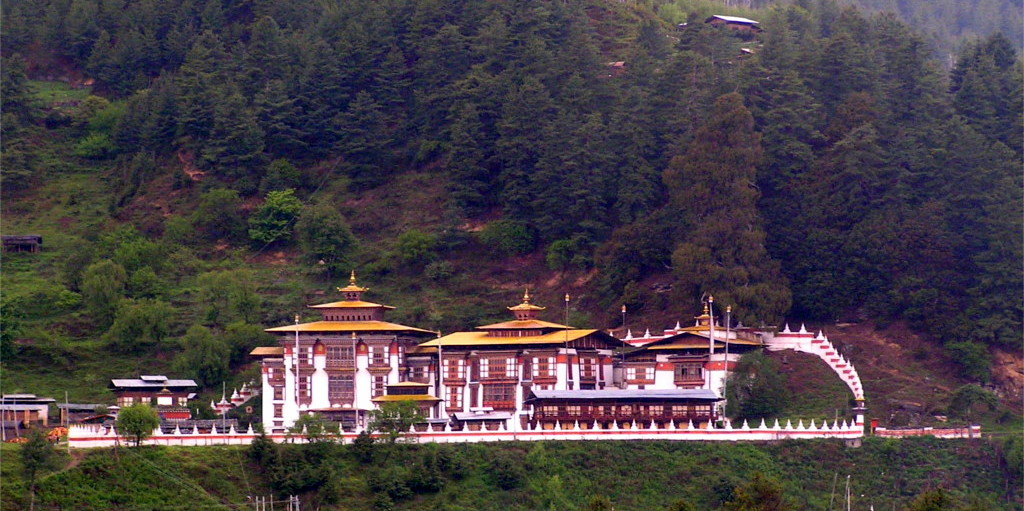
-
Historical Significance: The name "Kurje" translates to "body imprint," referring to the sacred cave where Guru Padmasambhava (also known as Guru Rinpoche) meditated and left the imprint of his body on the rock. This event marks one of the most hallowed occurrences in Bhutanese Buddhism. The monastery complex itself is made up of three main temples: the oldest was constructed in 1652 by Minjur Tenpa, the third Druk Desi (secular ruler) of Bhutan on the site of the cave. The second temple was founded by the first King of Bhutan, Ugyen Wangchuck, in the early 20th century, and the third temple was added in 1990, contributing to the spiritual ambiance and architectural grandeur of the site.
-
Architectural Features: Kurje Lhakhang is renowned for its striking architecture that reflects the unique style of Bhutanese temple construction. Each of the three temples has distinctive characteristics, with richly adorned interiors featuring statues of significant Buddhist figures, intricate murals, and sacred thangkas that illustrate key aspects of Buddhist teachings and history. The complex is encircled by a 108-chorten wall, which adds to the sanctity of the monastery.
-
Cultural and Religious Hub: Kurje Lhakhang is a focal point for numerous religious festivals and rituals, which draw both locals and tourists alike. It is particularly busy during important Buddhist dates when the faithful gather to perform ceremonies and rituals that are believed to bring merit and blessings. The site is also a crucial center for religious teachings and retreats, serving the spiritual needs of the local community and monks.
-
Visitor Experience: Visitors to Kurje Lhakhang are treated to a serene and spiritually charged atmosphere. The location in the Bumthang valley, known as the "Spiritual Heart of Bhutan," offers lush scenery and a tranquil environment that enhances the spiritual experience. The complex provides an opportunity for reflection and prayer, as well as a chance to connect with Bhutan’s deep religious traditions.
-
Spiritual Significance: The spiritual importance of Kurje Lhakhang cannot be overstated. It is considered a powerhouse of spiritual energy due to its direct connection to Guru Rinpoche, who is revered as the second Buddha in Nyingma Buddhist traditions. Pilgrims come here to meditate, seek blessings, and wash away sins in the sacred waters nearby, believed to have healing properties.
Kurje Lhakhang is more than just a monastery; it is a beacon of Bhutanese spiritual heritage, offering insight into the profound depths of Vajrayana Buddhism as practiced in Bhutan. Its rich history, sacred architecture, and peaceful environment make it a must-visit for anyone looking to delve deeper into Bhutan's spiritual culture.
Tashichho Dzong in Thimphu
Tashichho Dzong in Thimphu is one of Bhutan's most prominent and historically significant structures, serving both as a governmental and religious center. Located on the western bank of the Wang Chhu river, it is an iconic symbol of authority, harmony, and tradition in the Kingdom of Bhutan.
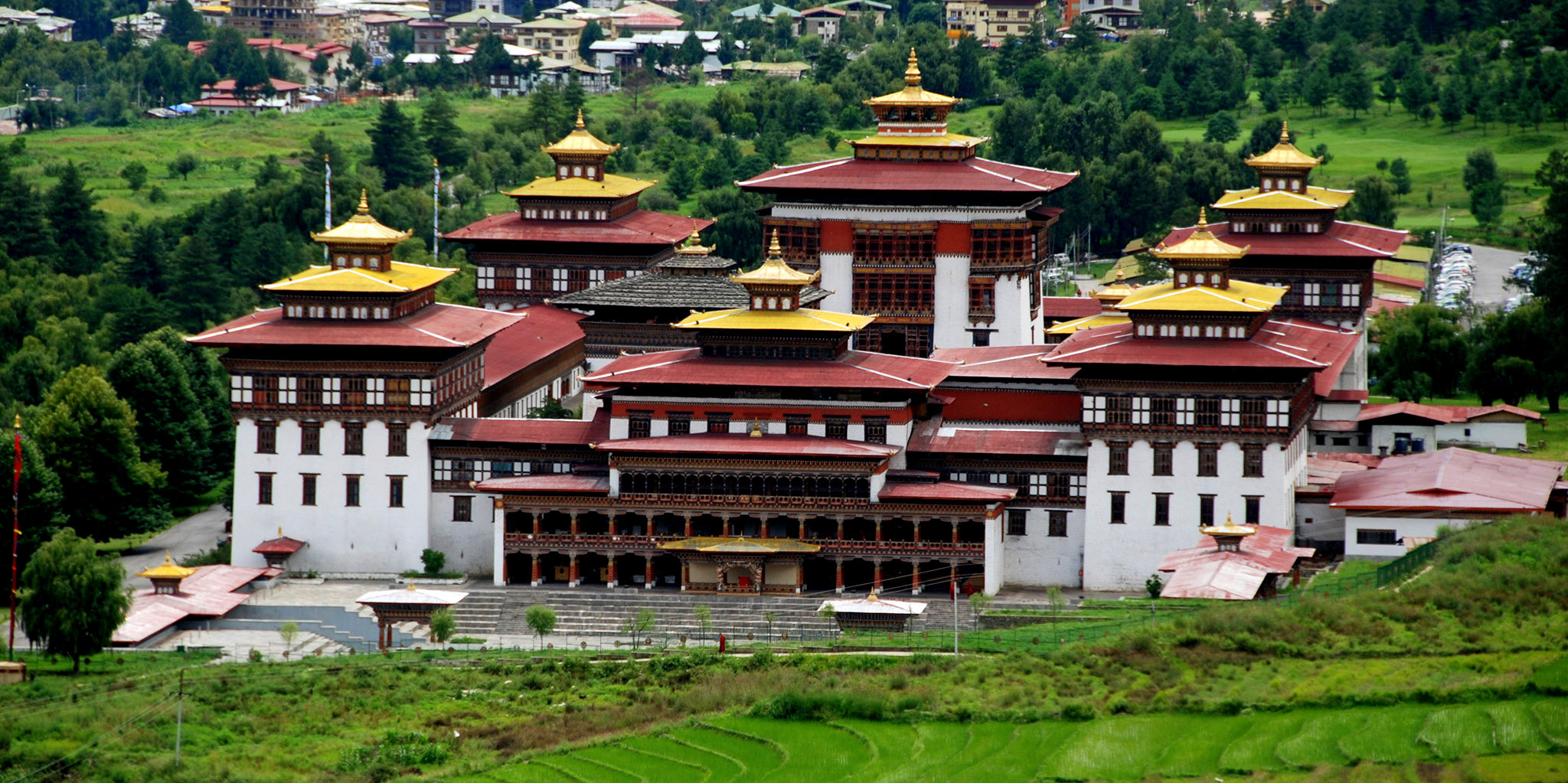
-
Historical Significance: Tashichho Dzong often referred to as "the fortress of the glorious religion," was originally constructed in 1641 and has been rebuilt several times due to damage from fire and earthquakes. The present dzong was rebuilt in 1962 by the third King of Bhutan, His Majesty King Jigme Dorji Wangchuck, as the seat of the government. The dzong also houses the offices of the King, the throne room, and several government ministries.
-
Architectural Features: The architecture of Tashichho Dzong is a splendid example of Bhutanese craftsmanship, featuring towering whitewashed walls, traditional wood carvings, and beautifully painted mandalas and other religious figures. The structure is massive, housing more than thirty temples, chapels, and other administrative offices within its walls, all meticulously maintained and protected. The main structure is flanked by beautifully landscaped gardens and courtyards which add to its majestic appearance.
-
Dual Functionality: Tashichho Dzong is unique in its dual functionality. It serves as the central monastic body's headquarters, home to the Je Khenpo (Chief Abbot) and the monk body of Thimphu district during the summer months. It is also the central administrative headquarters for the government, symbolizing the traditional Bhutanese polity of a dual governance system by the Monk Body and the administrative officials.
-
Cultural and Religious Hub: Apart from its administrative functions, Tashichho Dzong is a focal point for many cultural and religious festivals, particularly the Thimphu Tshechu, one of Bhutan's largest religious festivals. Held annually in the autumn, this festival features days of religious ceremonies, dances performed by monks in elaborate masks, and a display of the Thongdrel, a large tapestry depicting Guru Rinpoche and other saints.
-
Visitor Experience: Visitors to Tashichho Dzong can explore the outer courtyards and some of the temples within the complex. The grandeur of its architecture and the daily rituals performed by the monks provide a fascinating glimpse into the religious and cultural life of Bhutan. The best time to visit is towards the evening when the setting sun casts golden hues over the dzong’s towering walls and beautifully landscaped grounds.
-
Significance in Modern Bhutan: Tashichho Dzong is not only a testament to the historical Bhutanese spirit but also a vibrant centre of governance, religion, and culture in modern Bhutan. Its role in the everyday lives of the Bhutanese people and its function in the governance of the country make it an enduring symbol of Bhutan’s heritage and its ongoing journey into the future.
Tashichho Dzong remains a must-visit landmark for anyone traveling to Thimphu, offering a profound insight into the blend of monarchy, religion, and administrative governance that characterizes the Kingdom of Bhutan.
Rules and Regulations for Top Monasteries to Visit in Bhutan
When visiting the top monasteries in Bhutan, it's important to be aware of and respect the local customs and regulations that reflect the deep religious and cultural significance of these sites. Here are some general rules and guidelines to follow when visiting monasteries in Bhutan:
Dress Code
-
Modest Dress: Wear modest clothing that covers shoulders and knees. Long pants and long-sleeved shirts are recommended.
-
Remove Shoes: You will be required to remove your shoes before entering any of the temples within the monasteries.
Conduct
-
Silence: Maintain a respectful silence or speak softly when inside or near the monastic areas. Loud noises can disturb both the monks who live there and other visitors.
-
No Smoking: Smoking is not allowed within the monastery grounds.
-
No Public Displays of Affection: As monasteries are sacred places, refrain from public displays of affection.
Photography
-
Restrictions Inside: Photography is often not allowed inside the temples, especially near the altars or of the religious artifacts.
-
Ask for Permission: Always ask for permission before taking photos of the monks or people. Some might not prefer to be photographed.
Interaction with Monks
Spiritual Objects and Icons
-
Respect Sacred Objects: Do not touch or point your feet at religious objects and statues within the monasteries.
-
Walking Direction: When walking around religious objects such as stupas or temples, always move in a clockwise direction, which is the traditional way of showing respect.
Environmental Care
-
No Littering: Keep the surroundings clean by not littering. Use designated waste disposal facilities if available.
-
Respect Wildlife: If the monastery is in a location with wildlife, such as the Gangtey Monastery in Phobjikha Valley, respect the natural habitat and maintain a safe distance from animals.
Participation in Rituals
-
Joining Prayers: Visitors are sometimes allowed to participate in prayer sessions. However, it is important to follow the lead of the locals or guides on how to properly engage in these practices.
-
Offerings: Offering money or food to the monasteries is welcome but should be done respectfully and usually through a donation box or handed directly to the senior monk.
Guided Tours
- Follow Your Guide: When part of a guided tour, always stay with the group and follow the instructions provided by your guide who is familiar with the monastery's specific protocols.
Adhering to these rules ensures that both the sanctity of these spiritual sites is maintained and that your visit is enriching and respectful towards the host culture. Bhutan's monasteries are not just tourist attractions; they are places of worship and meditation, deeply embedded within the local communities' spiritual life.
Tips to Make your Bhutan travel Memorable
Visiting the top monasteries in Bhutan can be a profound and enriching experience. To make the most of your trip and ensure it's both respectful and rewarding, consider these tips:
-
Plan Your Visit Around Festival Times: Many monasteries host vibrant festivals, especially in the form of Tshechus (religious festivals), which feature masked dances and cultural performances. Plan to visit during these events to witness Bhutanese culture at its most lively. For example, the Paro Tshechu at Paro Dzong and the Thimphu Tshechu at Tashichho Dzong are spectacular.
-
Hire a Local Guide: Employing a local guide who understands both the cultural and spiritual significance of the monasteries can greatly enhance your experience. Guides can provide insights into the history and rituals, and help communicate with locals if necessary.
-
Acclimatize Appropriately: Some of the monasteries, like the Tiger’s Nest Monastery, are located at high altitudes. Spend a few days acclimatizing to the altitude in Bhutan before attempting any strenuous hikes to avoid altitude sickness.
-
Dress Respectfully: As mentioned earlier, dressing modestly is crucial when visiting religious sites. Ensure your legs and arms are covered and hats are removed. This shows respect towards the monastic community.
-
Be Prepared for Walking: Many monasteries, such as the Tiger’s Nest, require a significant amount of walking or hiking. Wear comfortable, sturdy shoes and carry water and snacks. Check the weather forecast and dress appropriately, as the weather can change quickly in the mountains.
-
Respect the Monastic Life: Monasteries are not just tourist destinations; they are active places of worship and study for monks. Be mindful of their routines and privacy—observe any signs or notices about restricted areas within the monastery grounds.
-
Learn Basic Dzongkha Phrases: Learning a few phrases in Dzongkha, the national language of Bhutan, such as greetings and words of thanks, can enrich interaction with locals and show respect for their culture.
-
Document Your Visit Respectfully: While photography is an excellent way to preserve memories of your visit, always ask for permission before taking photos, especially of monks and during religious ceremonies. In some areas inside the monasteries, photography might be prohibited.
-
Make Mindful Offerings: If you wish to make offerings at the monasteries, consider useful items such as school supplies or books for the monks, or donations towards the maintenance of the temples. Monetary donations should be placed in donation boxes or given directly to the administrative offices of the monastery.
-
Embrace the Spiritual Experience: Whether or not you follow Buddhism, spending time in contemplation or meditation at these sacred sites can offer a unique spiritual experience. Respect the silence and use the opportunity to reflect or meditate.
By following these tips, you can ensure a memorable and respectful visit to Bhutan’s revered monasteries, deepening your understanding of this unique Himalayan culture and its spiritual traditions.
Best Time to Visit in Bhutan
The ideal time to visit the top monasteries in Bhutan largely depends on what you're looking to experience during your visit, the weather conditions, and the cultural events you might want to witness. Here’s a general guide to help you plan your trip:
Spring (March to May)
-
Weather: This is one of the best times to visit Bhutan as the weather is pleasant with mild temperatures. The valleys are lush and the flowers, including the famous rhododendrons, are in bloom.
-
Cultural Events: Paro Tshechu, one of the most famous festivals in Bhutan, usually takes place in March or April. It's a great time to visit Paro Dzong and experience Bhutanese culture.
-
Visibility: The skies are generally clear, offering great views of the Himalayan peaks, which makes it an excellent time for photography, especially at monastic sites like Tiger’s Nest Monastery.
Autumn (September to November)
-
Weather: Autumn is another peak season for visitors due to the stable weather and clear skies. The temperatures are comfortable, making it ideal for hiking and visiting outdoor sites.
-
Cultural Events: Thimphu Tshechu and Wangduephodrang Tshechu are held during this period, providing visitors with the opportunity to see traditional dances and religious rituals.
-
Hiking: This season is particularly good for treks to monasteries like Tiger’s Nest as the paths are dry and the views of the valley are unobstructed.
Winter (December to February)
-
Weather: Winter in Bhutan can be cold, but it is generally dry, and the lowlands remain pleasant. This is a quieter time for tourism, which means less crowded visits to popular monasteries.
-
Cultural Events: The Punakha Dromche and Tshechu take place in February, offering a glimpse into the historical and spiritual celebrations at the majestic Punakha Dzong.
-
Bird Watching: For visitors to Gangtey Monastery in the Phobjikha Valley, winter is a special time as it is when the endangered black-necked cranes visit the valley.
Summer (June to August)
-
Weather: Summer is the monsoon season in Bhutan. While the rain makes the landscape exceptionally green and beautiful, it can also lead to muddy trails and obstructed views.
-
Visitor Experience: Fewer tourists visit during this time, which could mean a more peaceful experience at the monasteries.
-
Travel Considerations: Traveling to remote monasteries might be more challenging due to the rains, but the main sites like Tashichho Dzong in Thimphu are accessible.
Spring and autumn are generally considered the best times to visit monasteries in Bhutan due to the favorable weather conditions, the occurrence of major festivals, and the excellent opportunities for hiking and photography. However, each season offers its own unique set of experiences and sights, making Bhutan a year-round destination for those interested in its monastic and cultural heritage.
Touring the most prestigious monasteries in Bhutan reveals great knowledge of the spiritual and cultural richness of the nation. Pivotal centers of Bhutanese culture and spirituality, iconic sites like the Tiger’s Nest and the grand Punakha Dzong are also visually appealing. Perfect spring and fall trips add to the fun with outstanding weather and lively events. Every convent gives a one-of-a-kind look at the maintained customs of Bhutan and offers a spiritual pilgrimage transcending standard tourism, therefore inviting visitors to submerge themselves in a world of quiet beauty and strong tradition.
FAQs for Bhutan Tours
Q: Do I need a visa to visit Bhutan and its monasteries?
A: Yes, except for citizens of India, Bangladesh, and the Maldives, all visitors to Bhutan require a visa. Visas are arranged by your Bhutanese tour operator and included in your travel package, which is mandatory for visiting Bhutan.
Q: How can I reach the Tiger’s Nest Monastery?
A: The Tiger’s Nest Monastery (Taktsang) is accessible via a hike from the base in Paro Valley. The hike takes about 2 to 3 hours one way, depending on your pace. Horses can be hired for the ascent, but the last stretch must be covered on foot.
Q: What is the best time to visit Bhutan’s monasteries?
A: The best times to visit are during spring (March to May) and autumn (September to November), when the weather is favorable, and major festivals take place, offering insights into Bhutanese culture and spirituality.
Q: Are there specific dress codes for visiting monasteries in Bhutan?
A: Yes, modest dress is required. Visitors should wear clothing that covers their shoulders and knees. Hats and sunglasses should be removed before entering the monastery premises.
Q: Can I take photographs inside the monasteries?
A: Photography restrictions vary. While exterior shots are generally permitted, photography inside temples or of sacred objects may be restricted. Always check for signs or ask for permission.
Q: Is it possible to stay overnight in a monastery in Bhutan?
A: Generally, overnight stays in monasteries are not allowed for tourists. Accommodations are provided in hotels, guesthouses, or homestays arranged by your tour operator.
Q: Are there entrance fees for visiting the monasteries?
A: Some monasteries may charge a small entrance fee, which is typically included in the tour package price arranged by your tour operator.
Q: Can I participate in monastery festivals?
A: Yes, visitors are welcome to observe and sometimes participate in monastery festivals. These events are excellent opportunities to experience Bhutanese culture and traditions firsthand.
Q: What should I do if I want to make an offering at a monastery?
A: Offerings are welcomed and can be a meaningful gesture. It is best to ask your guide or a monastery official about the appropriate way to make an offering.
Q: How do I respect the monastic community while visiting?
A: Be mindful of the monastery's rules, maintain a respectful distance from monks, especially during prayer or meditation, speak softly, and follow the local customs to ensure a respectful visit.
For the Nepal tour, please click here.
If you are looking for different kinds of Nepal Tours or Trekking Packages, feel free to contact us.
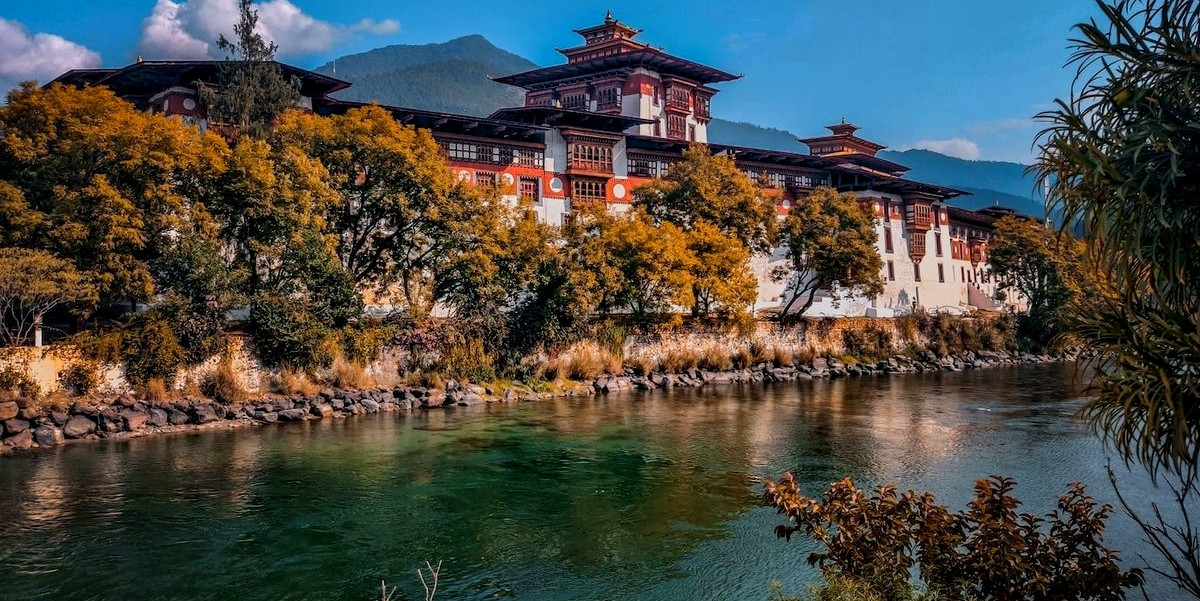

.jpg)

.jpg)


